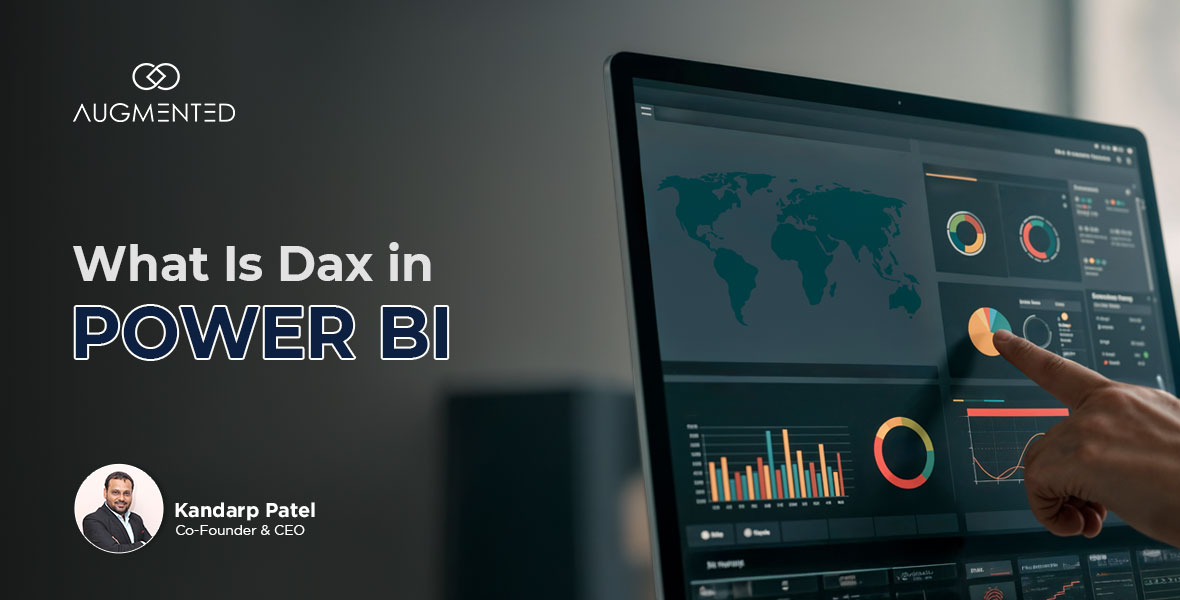No wonder data is now an asset for companies across all industries. However, the abundance and complexity of data bring exciting yet challenging opportunities.
Amid the cut-through competition in the digital age, moving to a data-driven model is necessary.
In this blog, we will discuss the emerging nature of data analysis. Moreover, the latest trends and innovations that you can use for your business.
Let’s get started.
The Ever-Evolving Nature of Data Analysis
When gaining business insights, there was a time when businesses solely wanted answers to "What happened?"
A hypothetical scenario where a company's sales sharply declined within the last quarter. The core focus was to know "what happened? to the sale..." However, several indicators after trying to find the what, it was "why it happened" that everyone was after.
Once the why was known, data analysis and visualization techniques further evolved.
But the human mind never halts! With the desire to look beyond the present and focus on the future, data analysis solutions grew.
According to Statista, the global data analytics market will boost with a compound annual growth rate of nearly 30% in the coming years.
So, you can imagine the changing dynamics of data analysis with time. Right? Data analysis in conjunction with data visualization software, you can:
- Analyze your data
- Make informed decisions
- Predict the future behavior of your business
- Improve your overall business growth
So, excited to get started? But, with the advent of new technologies, you need your business to be more productive and follow today’s trends. Data analysis and visualization solutions come under those trends.
Moreover, after the global pandemic, over 97% of organizations are investing in big data and artificial intelligence.
So, let’s have a look at the top five trends and innovations in data analysis that you can use for your business or organization.
The Top Five Trends and Innovations of Data Analysis
Businesses today are willing to stay in the market and increase their odds of success. They are working with slimmer margins for errors. Companies are not taking risks or making decisions based on bad data.
The sole reason? Today, data is considered the “new oil” of the market.
Here is why we are bringing you the top five trends and innovations that you can use to make better-informed decisions. Let’s dive in.
1. Artificial Intelligence and Machine Learning
With the ocean of data that organizations collect, more than 85% or more of data is unstructured data. Thus, companies and businesses are adopting artificial intelligence and machine learning to analyze big data.
AI and ML will allow you to structure your data in a smarter and faster way. These advanced analytics techniques allow you to predict better insights, automate your tasks, and provide improved decision-making solutions.
Example: The Banking Sector
The biggest sector using the power of AI and ML is the banking industry. Banks are getting a 360-degree view of their customer data to provide better digital experiences and data visualization with the aid of data scientists and visualization developers.
However, almost every industry, from retail to manufacturing, is impacted by AI/ML. All are trying to convert their data into tangible assets.
Moreover, the businesses not riding on this wave will risk losing ground to others.
2. Data-as-a-Service (DAAS)
Companies store data online, using Data-as-a-Service, a cloud-based management platform. Likewise, you can leverage the platform to update your company's infrastructure, improve data visualization, streamline management, and enhance analytics.
Furthermore, an increasing number of businesses will adopt DaaS tools. The global DaaS market is projected to expand.
This cost-effective cloud computing technology helps organizations to remotely access, manage, and analyze their data.
Example:
A retail company willing to improve sales accuracy uses DaaS to access data sources, manage compliance, and scale operations. This helps them scale the requirements and adjust their operations to fluctuating demands.
3. Data Visualization
Data visualization software helps make complex and big datasets understandable and accessible. It helps transform complex data into clear and intuitive visuals.
Data analysts use visualization applications and tools to gain insights into the data, identify patterns, and further analyze the data.
Example: The COVID-19 Dashboard
As you can see in the image above, Governments and health organizations worldwide use data visualization as a tool in data analysis. They used it to inform the public and better understand the pandemic.
Data visualization plays a crucial role in conveying complex data to the public and decision-makers. Data visualization helped the government understand the global crisis and make informed decisions.
However, you don’t have to invest countless hours to plot those visualization graphs. Augmented Systems data visualization solution is a game-changer for businesses seeking deeper insights from their data.
4. Data-Driven Consumer Experience
Behind every business today, the driving force behind every decision is the customer's needs and wants. Over the years, the customers' expectations have increased.
Here is when data analysis comes into play. Organizations use data analysis to deliver personalized customer experience. They engage the target audience with their needs and expectations.
According to the news from dimension data, 84% of companies that work to improve their customer experience report increased revenue.
Thus, most of the platforms nowadays use data analytics to provide personalized service to their customers.
Example: E-Commerce Personalization
You must be aware of e-commerce platforms, such as Amazon and Flipkart. These platforms provide personalized shopping experiences to the shoppers.
Data analysis is used to analyze your past interactions with the platforms. The platform then tailors your choices and needs, providing a personalized shopping experience.
5. Cloud-Based Database
The graph displays the rate of data created, consumed and stored from 2010 to 2024. Over the years, global data creation is projected to grow by over 180 zettabytes.
It's a task to gather, label, clean, and organize big data in one place. Thus, cloud-based platforms are becoming popular. Businesses can improve task management and efficiency by utilizing cloud-based data with future data science trends.
Example: Data Science Project Collaboration
For a data science team in a global corporation, with team members scattered across the world, cloud-based data analysis plays an important role.
Using cloud-based tools and platforms, data analysts, scientists, engineers and data visualization developers can work together. The data collected from various sources can be accessible to all team members.
Conclusion
The data analytics market is expected to grow enormously, with a forecasted market value of over 650 billion dollars by 2029.
So, imagine how these trends can help you shape your business with the help of data analysis. Making your business more powerful and efficient.
Moreover, you can stay competitive, make informed decisions, and create personalized customer experiences. Embrace these innovations and harness the full potential of our ADL analytics with us at Augmented.





